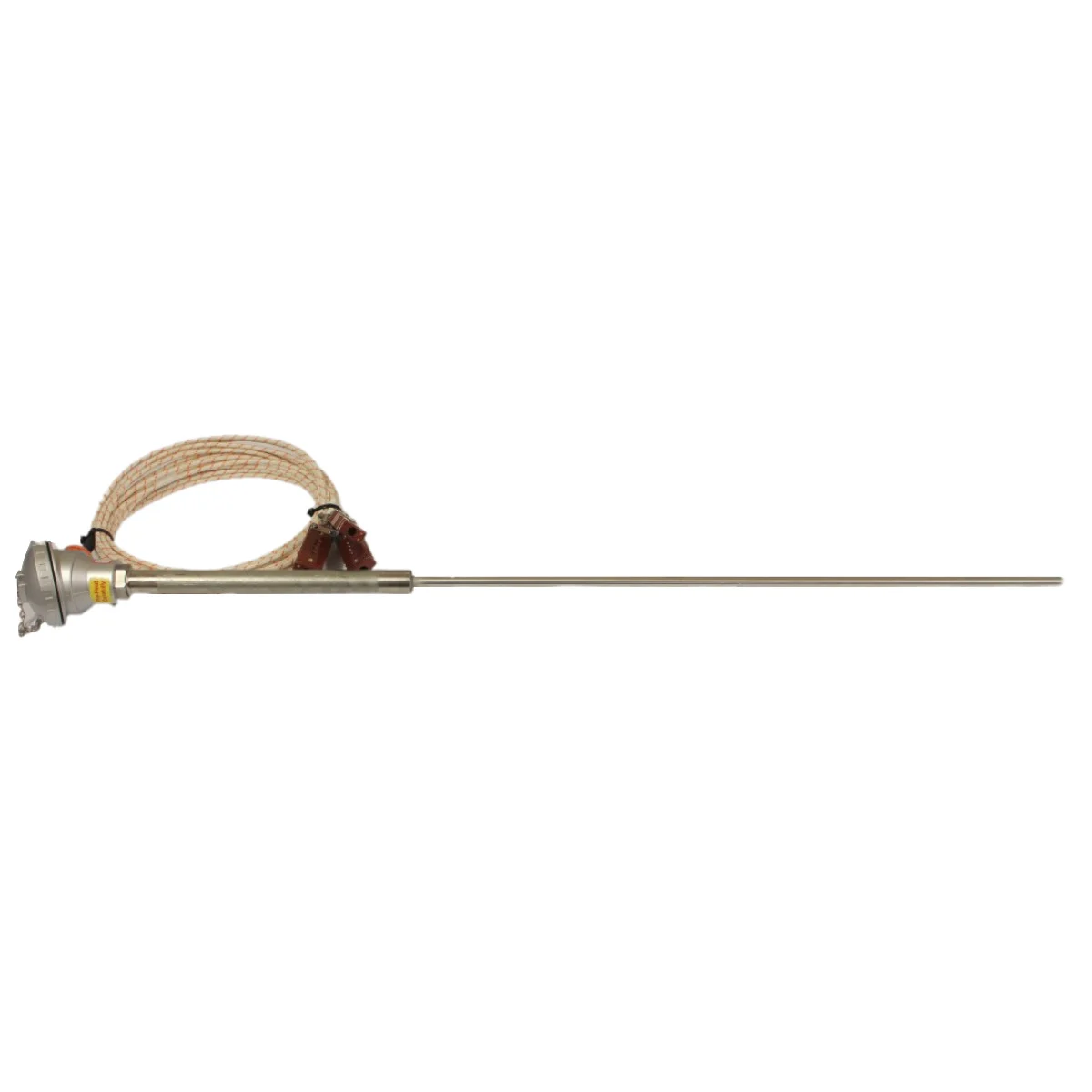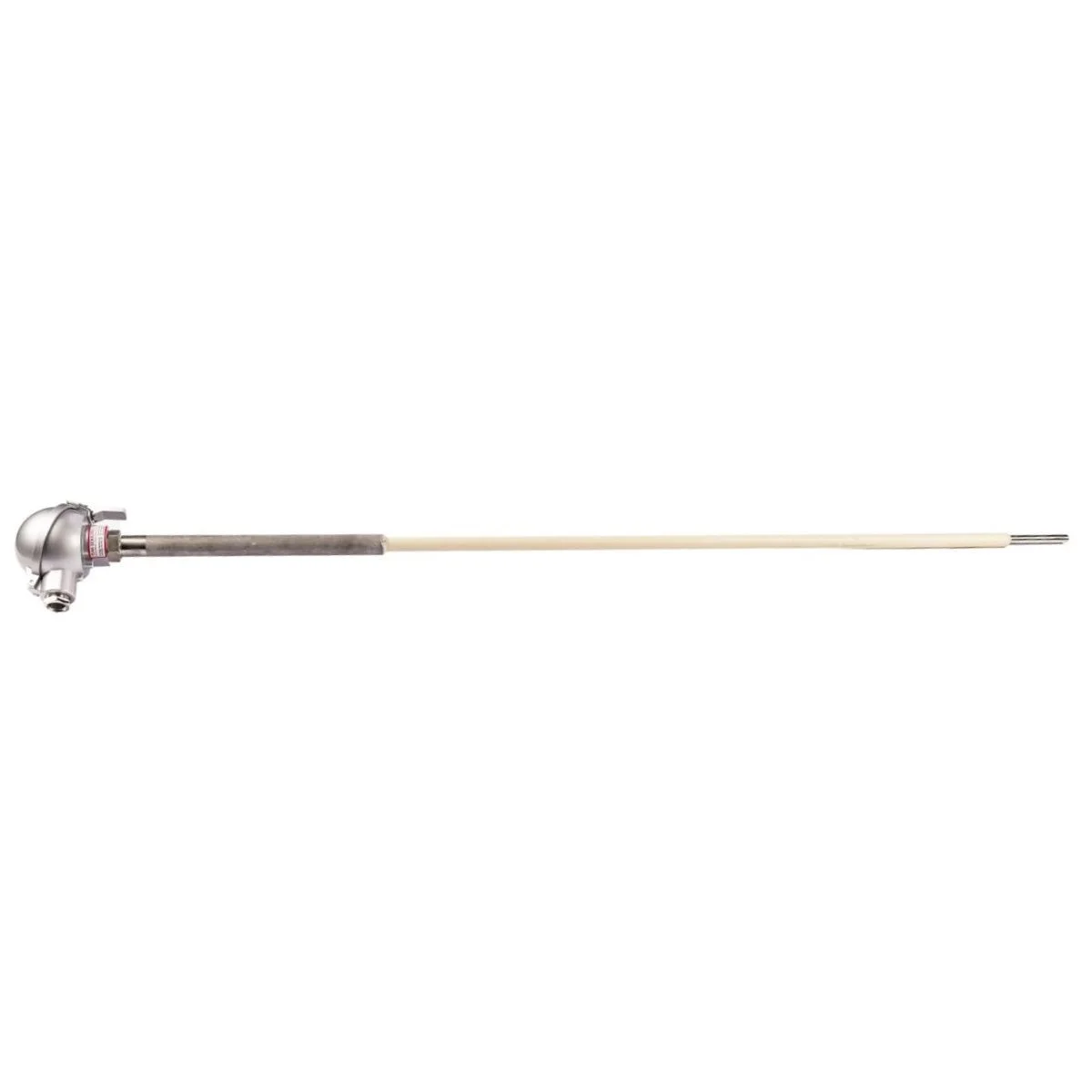Glass Furnace Temperature Sensors
Temperature Sensors for Glass
Many furnaces in the glass manufacturing industry experience temperature control issues. Glass furnace temperature can range from around 1100 °C to 1600 °C. It is therefore important that the glass furnace temperature sensors we supply can withstand the environment in order to produce an accurate reading. Because of the severe heat of glass furnaces, rare metal thermocouples are the most common solution for glass furnace temperature measurement.
Measuring Temperature In A Glass Furnace
Melter Furnace
During the initial melting of glass cullet, sufficient melt temperature is required to achieve the glass condition required for processing. However excess heating uses extra fuel, shortens plant life and can affect the glass batch properties in an undesirable way.
Melter furnaces have temperature sensors in their walls, roof (crown) and bottom. These sensors can often be identified as they are tagged: Melter Bottom, Sump Bottom, Riser sidewall, Channel bottom, Crown, Melter Side wall and so on.
Forehearth
Melter output goes to the working end. A forehearth conditions the glass to the requirements of the forming machinery. In a typical container glass factory the primary requirement of the forehearth is glass homogeneity to help reduce stress in the end product. The glass temperature affects the viscosity, which is also a vital attribute for gob uniformity and subsequent processing.
Forehearths employ an array of tri level thermocouples, immersed in the glass, to determine the characteristics of the glass stream. Extra heating in the stream will optimise the flow uniformity. A final temperature sensor in the spout bowl is common along with Glass level electrodes.
Other glass furnace temperature applications
In glass plants, thermocouples are also used to assist in obtaining flue and re-generator temperature measurements.
What Sensors Are Used In The Glass Industry?
In the glass industry, various types of temperature sensors are used to ensure precise temperature control and monitoring, which is crucial for processes like melting, forming, and annealing. The primary temperature sensors used include:
Thermocouples:
• Widely used due to their durability and ability to withstand high temperatures.
• Types K, S, R, and B are commonly employed, depending on the specific temperature range and accuracy required.
Resistance Temperature Detectors (RTDs):
• Employed in areas requiring precise temperature measurements.
• Typically used in lower temperature zones compared to thermocouples.
Thermistors:
• Used for measuring lower temperature ranges.
• Less common in high-temperature processes but useful in specific applications within the glass industry.
Optical Pyrometers:
• Another form of non-contact temperature sensor.
• Particularly useful for measuring the temperature of molten glass and surfaces without physical contact.
These sensors help maintain optimal conditions, improve quality, and ensure the safety and efficiency of glass manufacturing processes.
Common Glass Furnace Temperature Sensors
Choose Peak Sensors
The team at Peak Sensors can design, manufacture and supply temperature sensors for your furnace within the glass manufacturing process.
We welcome any inquiries for glass plant thermocouples, cables, glass bubbler assemblies and glass level electrodes amongst other custom-built temperature sensors we can provide for your industry.





